
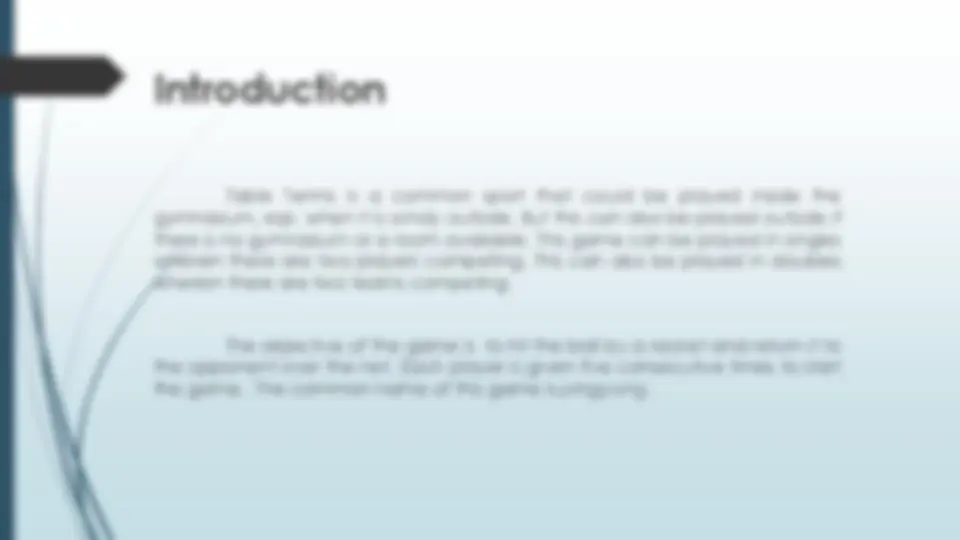
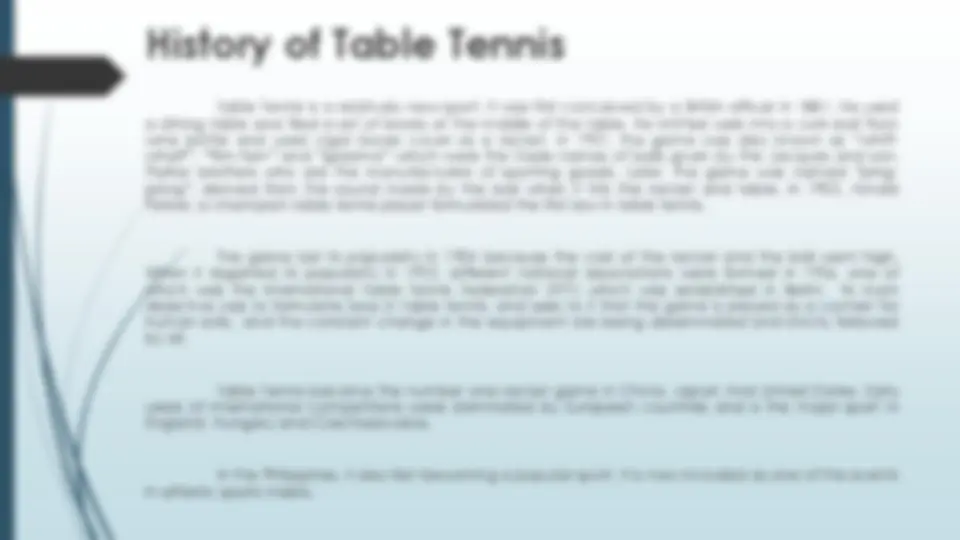
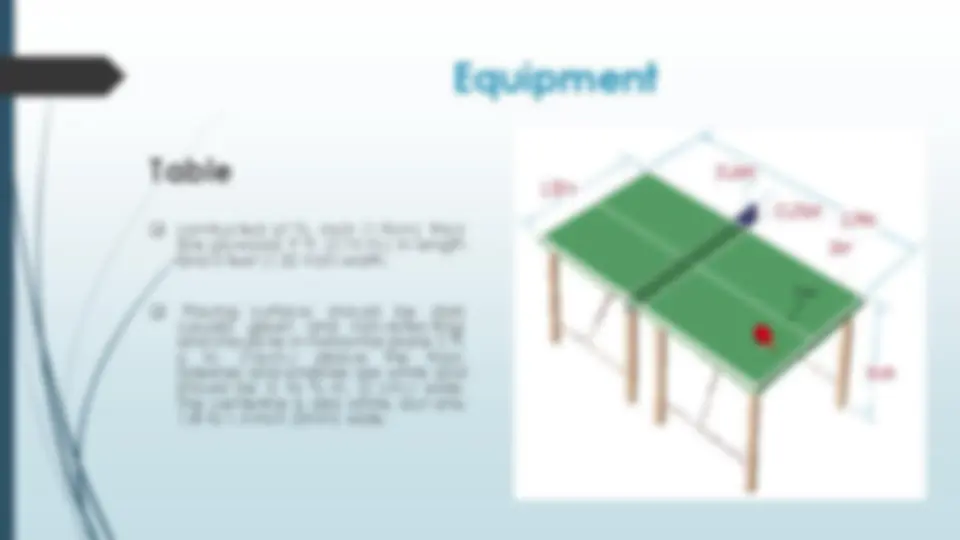
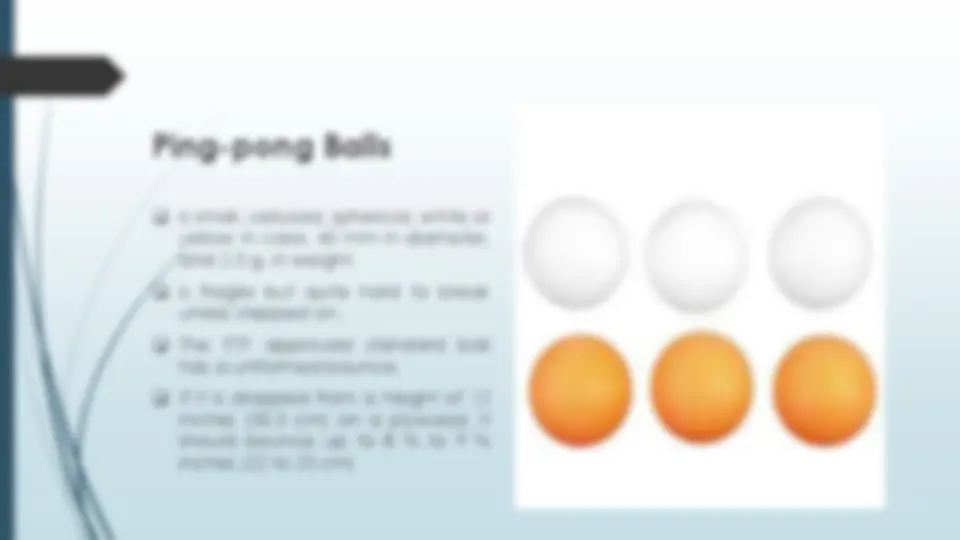
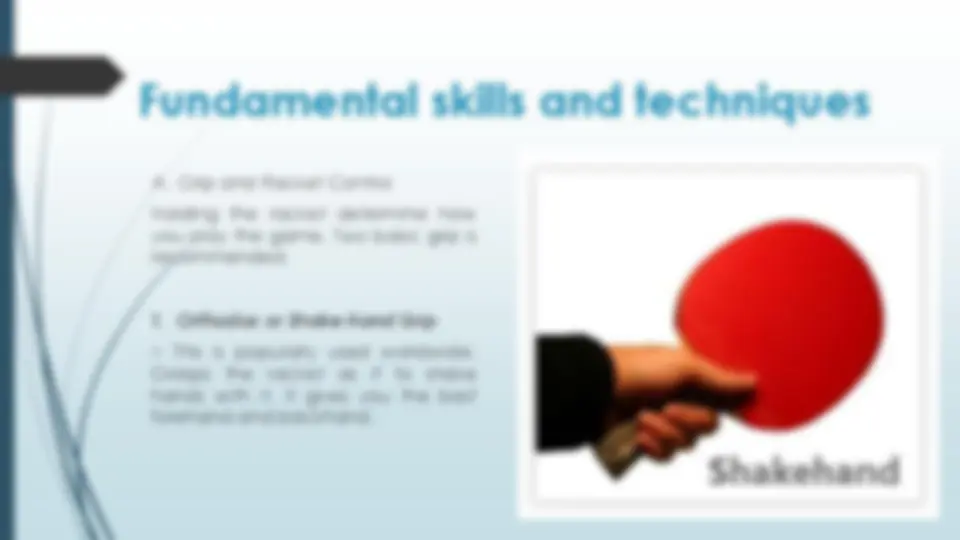
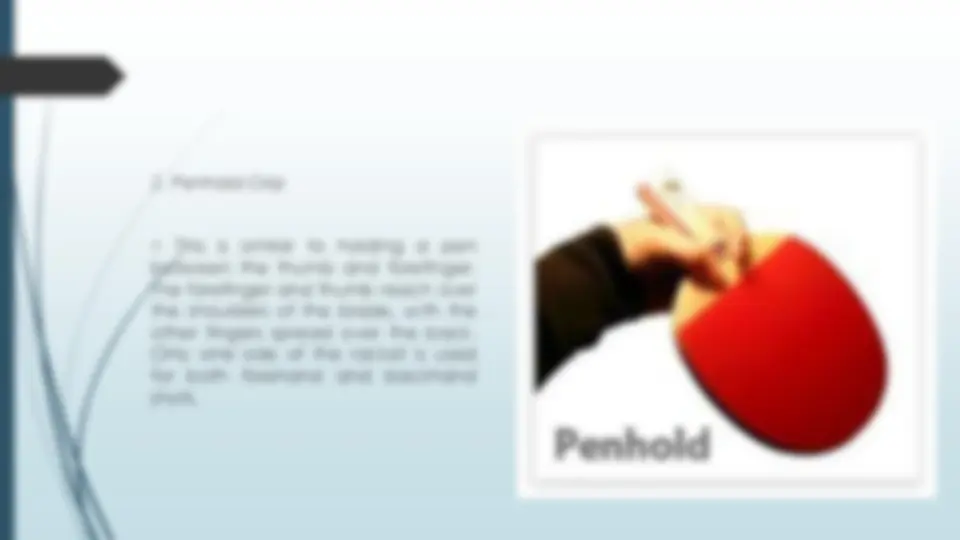
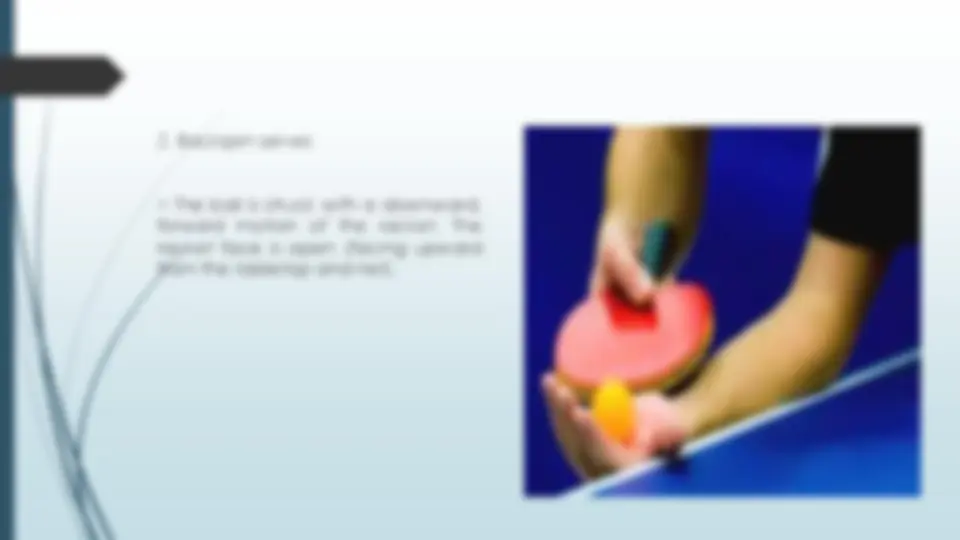
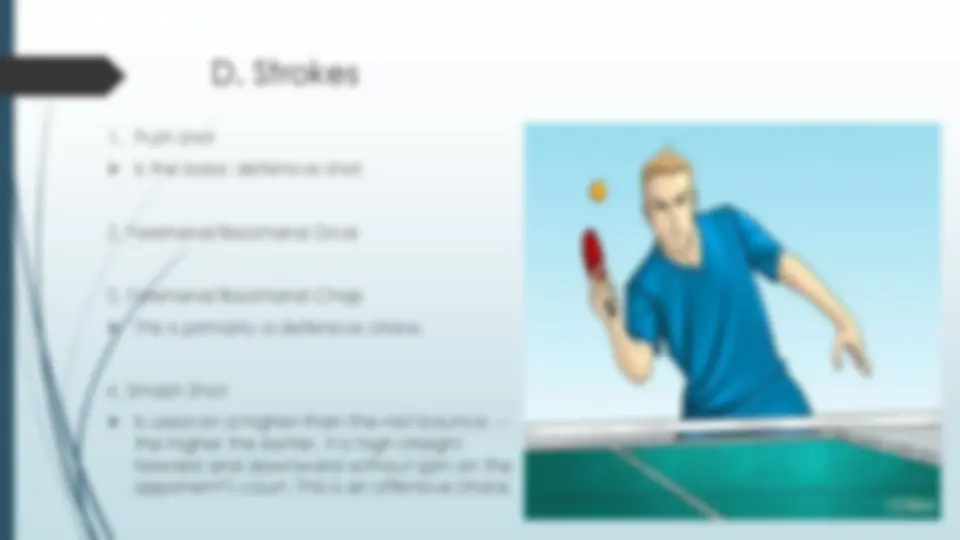
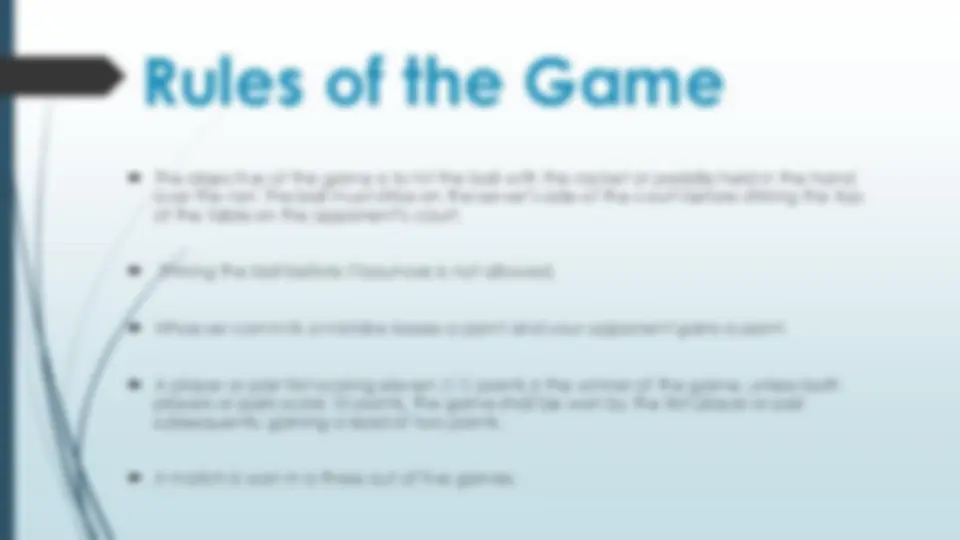
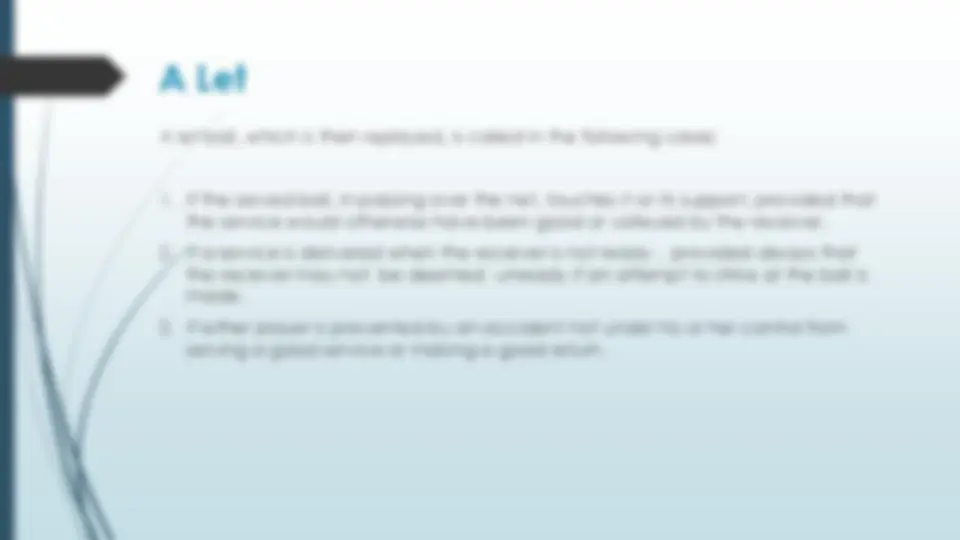
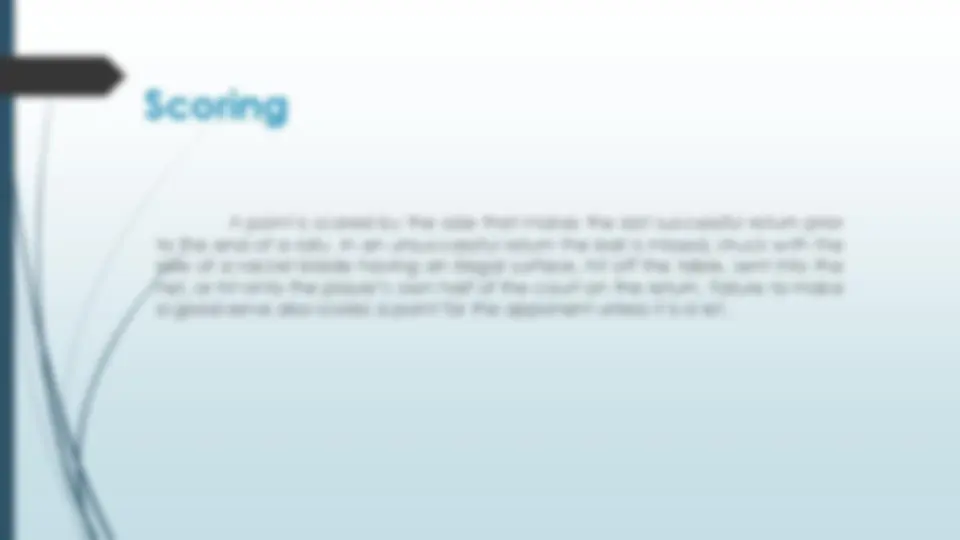
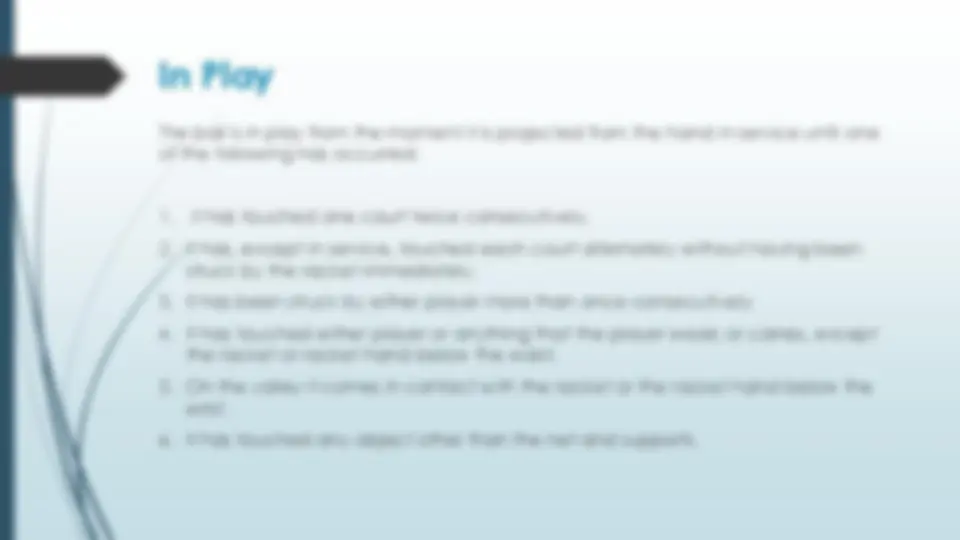
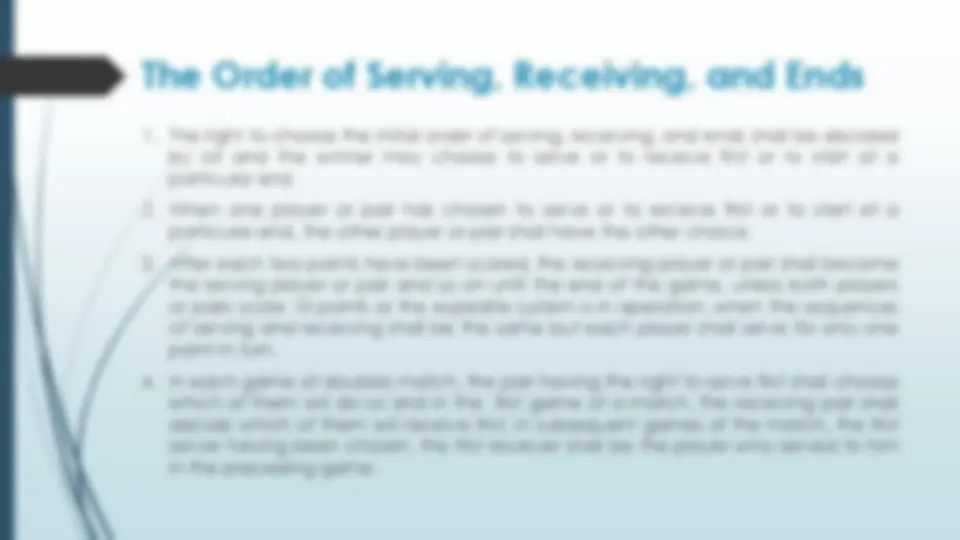
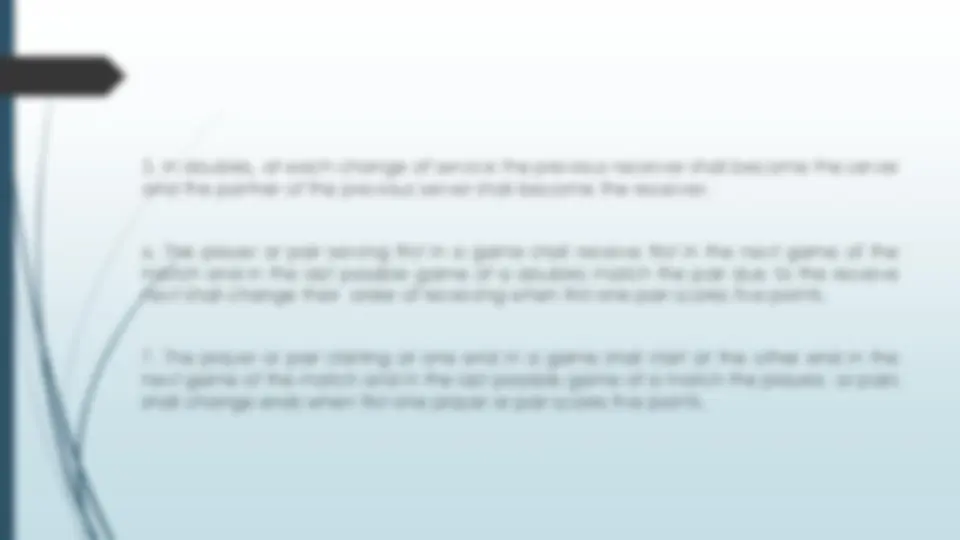
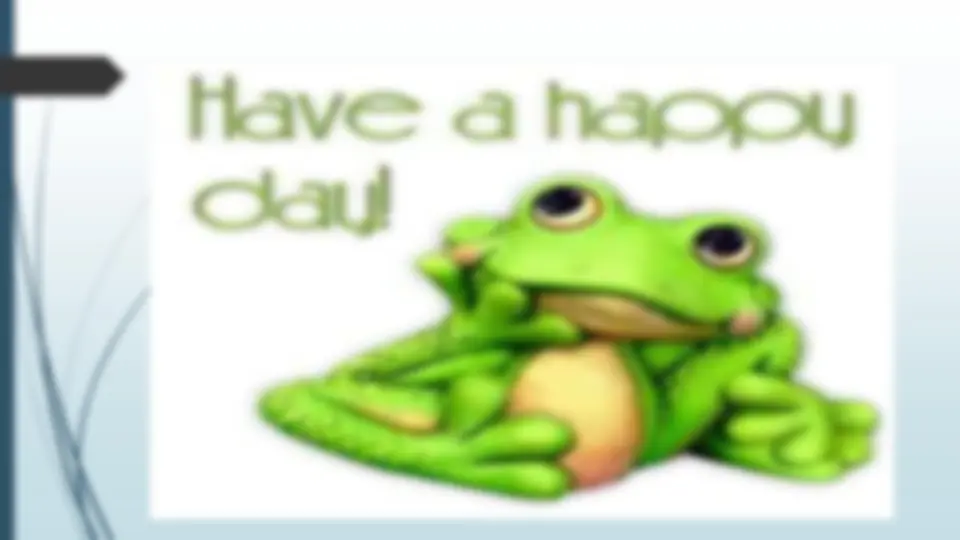


Study with the several resources on Docsity

Earn points by helping other students or get them with a premium plan


Prepare for your exams
Study with the several resources on Docsity

Earn points to download
Earn points by helping other students or get them with a premium plan
Community
Ask the community for help and clear up your study doubts
Discover the best universities in your country according to Docsity users
Free resources
Download our free guides on studying techniques, anxiety management strategies, and thesis advice from Docsity tutors
this document talks about the full view of the table tennis sports
Typology: Assignments
1 / 23

This page cannot be seen from the preview
Don't miss anything!
















Outline
Table Tennis is a relatively new sport. It was first conceived by a British officer in 1881. He used a dining table and filed a set of books at the middle of the table. He knitted web into a cork ball from wine bottle and used cigar boxes cover as a racket. In 1901 , the game was also known as “whiff- whaff”, “flim-fam” and “gossima” which were the trade names of balls given by the Jacques and son, Parker brothers who are the manufacturers of sporting goods. Later, the game was named “ping- pong”, derived from the sound made by the ball when it hits the racket and table. In 1903 , Arnold Parker, a champion table tennis player formulated the first law in table tennis. The game lost its popularity in 1904 because the cost of the racket and the ball went high. When it regained its popularity in 1922 , different national associations were formed in 1926 , one of which was the International Table Tennis Federation (ITTF) which was established in Berlin. Its main objective was to formulate laws in table tennis, and sees to it that the game is played as a contest for human skills,, and the constant change in the equipment are being disseminated and strictly followed by all. Table Tennis became the number one racket game in China, Japan And United States. Early years of international competitions were dominated by European countries and is the major sport in England, Hungary and Czechoslovakia. In the Philippines, it also fast becoming a popular sport. It is now included as one of the events in athletic sports meets.
Table contructed of ¾ - inch ( 1. 9 cm) thick fine plywood; 9 ft. ( 2. 74 m.) in length and 5 feet ( 1. 52 m)in width. Playing surface: should be dark (usually green and non-reflecting) and should lie in horizontal plane 2 ft. 6 in. ( 76 cm.) above the floor. Sidelines and endlines are white and should be ½ to ¾ in. ( 2 cm.) wide. The centerline is also white, but only 1 / 8 to 1. 4 inch ( 3 mm) wide.
Racket or Paddle a wooden rubber faced racket ( as mandated by the rules) The striking surface of the racket must be covered with a pimpled rubber facing inward and outward. A single layer of cellular (sponge) rubber may be located underneath the rubber surface. The two surface of the blade shall be black on one side and bright red on the other side.
Ping-pong Balls is small, celluloid, spherical, white or yellow in color, 40 mm in diameter, and 2. 5 g. in weight. is fragile but quite hard to break unless stepped on. The ITTF approved standard ball has a uniformed bounce. If it is dropped from a height of 12 inches ( 30. 5 cm) on a plywood, it should bounce up to 8 ¾ to 9 ¾ inches ( 22 to 25 cm)
This is similar to holding a pen between the thumb and forefinger. The forefinger and thumb reach over the shoulders of the blade, with the other fingers spread over the back. Only one side of the racket is used for both forehand and backhand shots.
B. Stance and Footwork Proper stance and footwork in serving or receiving are just as important in learning table tennis as they are in tennis, badminton, or any sport skill that requires a constantly alert player. Beginner’s Stance in Serving – Face slightly to the right side with feet well apart and the left foot forward. Be in position about 1 ½ to 2 ft. directly behind the center line of own court. Stance in Receiving – Position is about 2 to 2 ½ feet directly in the back of the center line of own court. Feet are well apart, knees slightly bent and body inclined forward in ready position. For Forehand Strokes – The left foot and left shoulder point approx. toward the table. For Backhand Strokes - The right foot and shoulder should point approx. toward the table.
The ball is struck with a downward, forward motion of the racket. The racket face is open (facing upward from the tabletop and net).
D. Strokes
A good service is delivered by projecting the ball from the free hand and the projection starts from above the playing surface. The ball must be resting on the palm of free hand, which is flat, and the thumb free of the fingers. As it starts to descend, the ball is struck so that it touches the server’s court first and then, passing directly over or around the net, touches the receiver’s court. A good return of a served ball must be struck by the receiver on the first bounce so that it passes directly over or around the net and touches directly on top of the opponent’s court.
A point is awarded to the opponent in the following circumstances:
A point is scored by the side that makes the last successful return prior to the end of a rally. In an unsuccessful return the ball is missed, struck with the side of a racket blade having an illegal surface, hit off the table, sent into the net, or hit onto the player’s own half of the court on the return. Failure to make a good serve also scores a point for the opponent unless it is a let.
In Play The ball is in play from the moment it is projected from the hand in service until one of the following has occurred: